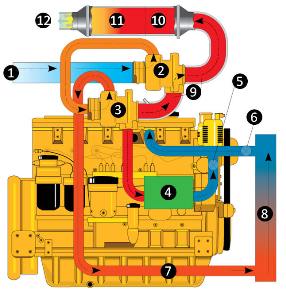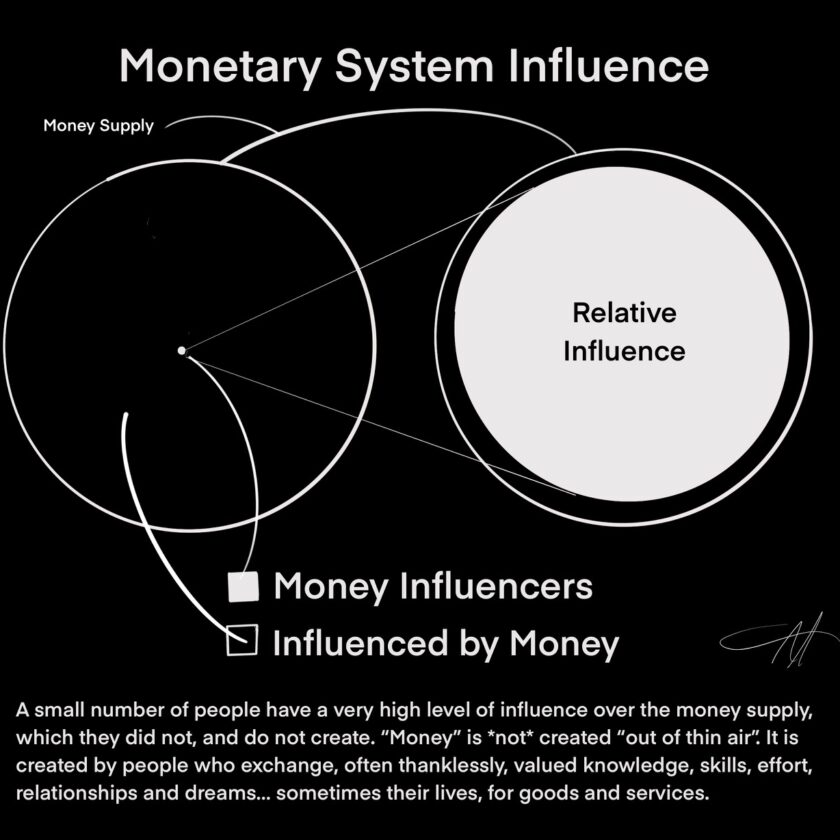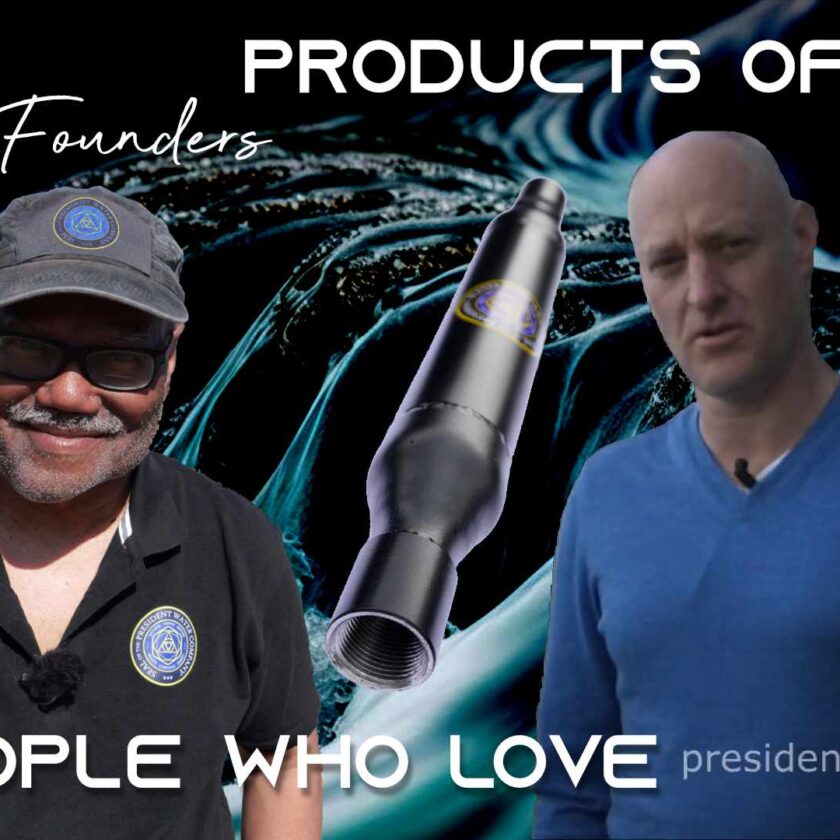
The year-end holiday season has become a month-long buying frenzy that would very likely go every day if a good reason could be found. In lieu of “good” reasons, there is no shortage of nefarious ways to get you to part with your money each day. The transportation industry’s ways to pick our pockets at will, would blow your mind, because it’s definitely a “well-oiled,” machine.

“The Problem” is neither the internal combustion engine, nor SUV’s, as some critics would have us believe. The problem is the built-in inefficiencies that have been institutionalized into engine design and “management.” We “putt” along in vehicles designed to give us 20 to 40 miles per gallon, when 150 mpg or more is possible NOW, and has been possible for quite some time.
Truth is, the automobile industry needs consumers to cycle through new, more complicated, and expensive automobiles every 2-3 years, so they are managing, in conjunction with the oil industry and protected by the government, a gradual move toward greater energy efficiency. However, the catch is that the transition requires replacing existing vehicles, which for most people means going further into debt.
The larger problem is that this massive hardware change isn’t necessary, nor is the time delay.
The chart below, from the Center for Climate and Energy Solutions, outlines the actual and projected rise in fuel economy standards for cars and trucks from 1978 through 2026.
Source: NHTSA Summary of Fuel Economy Performance, NHTSA MY2017-2025 Factsheet
- 1978-1985: Congress sets car standard (1978-1985)
- DOT sets truck standard to max feasible (1979-1996)
- DOT decreased car standard (1986-1989)
- DOT sets car standard to 27.5 mpg (1990-2010)
- Congress freezes truck standards at 20.7 mpg (1997-2001)
- Bush Admin issues new truck targets (2005-2007)
- EISA changes CAFE to footprint standard (2008-present)
- Obama Admin issues new car & truck standards (2012-2016)
- Obama Admin issues new car & truck standards (2017-2025)
Notice that the projected average automobile fuel economy standard for 2026 is 55 mpg. How does that sit with you when there is credible reason to believe that 150 mpg is available now?
Stanley Meyer, a high school dropout, built and operated a car that ran on water. There are numerous videos of his presentations, as well as the vehicles that he built, starting in the 1970’s. In 1998, he died suddenly.
Stan Meyer’s was not, and is not the only way to address the issue of combustibility in the internal combustion engine. Our biggest problem is that we’re allowing the industry to set its own timeline when changes that can begin making serious inroads into the environmental mess that we’ve made are available now.
Just like cancer cure pioneers in medicine, numerous inventors have been intimidated, persecuted, or killed, in order to keep high-efficiency vehicles a pipe dream of a distant future, instead of a present reality NOW.
 Internal combustion engines are capable of burning far less in fossil fuels than they do today. They can be modified too, except that many manufacturers will threaten to void your warranties. Diesel truck operators are required to add a new compound referred to as Diesel Exhaust Fluid, or “DEF” to “control” engine emissions. This product, which is made of urea mixed with de-ionized water, is another example of more government mandated layers of complexity and inefficiency to what is actually a simple and solvable problem.
Internal combustion engines are capable of burning far less in fossil fuels than they do today. They can be modified too, except that many manufacturers will threaten to void your warranties. Diesel truck operators are required to add a new compound referred to as Diesel Exhaust Fluid, or “DEF” to “control” engine emissions. This product, which is made of urea mixed with de-ionized water, is another example of more government mandated layers of complexity and inefficiency to what is actually a simple and solvable problem.
Notice in the image below, the molecules that represent our most common “refined” fuel products.

Compare these with a water molecule, or a cluster of them.

The common denominator in both images, is that hydrogen is the combusting element. The black residue that engines give off, is mostly carbon. If no carbon is used in the combusting fuel, then there would be no carbon in the exhaust.
The apparatus pictured below is called an Exhaust Gas Recirculation, or “EGR” System, which recycles some of the engine exhaust, which will have uncombusted fuel, through the intake a second time before being kicked out to the exhaust system and catalytic converter.
What most don’t know is that the oil “refining” process that results in various “grades” of gasoline, involves adding various chemicals. The results of this process are fuel molecules that are so large that a large percentage is not combusted. In other words, the refining process makes the fuel harder to burn, requiring more of it to be “consumed” – actually wasted – than necessary.

To handle the fuel that does not burn, the “catalytic converter” is a recycling system introduced in 1975 that uses chemical reactions to process the “toxic” fuel after it has left the engine and EGR systems, in an attempt to reduce emissions. If there was greater efficiency in the combustion, neither the converter nor the EGR systems would be needed, and the exhaust would not be “toxic,” as it would contain little to no carbon.
This is all doable NOW.
Like the Medical Industry Overlords who have allowed no change in standard cancer treatment ideology for over 100 years, the Transportation industry Overlords have been content to allow this inefficient approach to fuel combustion and management be the standard for over 40 years.

If that weren’t enough, if you made modifications to the engine that would increase the combustibility of the fuel by making the molecules smaller, the computer that “manages” the engine would adjust the air/fuel mixture to compensate, adding more fuel. To really fix the system, you have to remove all the “fixes” that keeps its components inefficient by design.
Inefficiencies Up the ‘Wazzu’
Government alphabet agencies, such as the EPA, along with the military, take active roles in inhibiting or discouraging the introduction of technologies that would change this situation today, allowing the public to get 100 miles and more per gallon of gas with our existing vehicles, and to average over 60 mpg for existing cars and trucks — including heavy haulers, by 2020.
That would represent change that we can live with. The manufacturers that would see a decline in business would have the resources to reconfigure themselves. I don’t have a problem with that since the public has been in a “reconfiguration” state as a result of their policies and practices for quite some time.
New cars and trucks will still be desired and purchased. The environment should not suffer any longer simply because some manufacturers have excess capacity. They can always retool and enter new markets, like Honda did with their personal jet.

In the meantime, the public must be the catalyst for these sorts of changes. The bar has been set too low for too long. We’ve been led to believe that raising gas mileage is an arduous and difficult task. The only real difficulty it seems, is in maintaining the appearance of difficulty, when you know it’s not really necessary.
Let’s Acknowledge ‘the Enhancers’
I personally know at least four still living individuals who have developed mileage enhancing technology or methods, and all of them are scuffling in one way or another to make ends meet.
Paul Pantone is one such Inventor.

In 2011, after meeting and interviewing him at the Tesla Tech Conference in Albuquerque, NM, Pantone invited me to come to his home in Oklahoma to learn more about his approach called, GEET. From that visit I produced the video titled, “Indelible Promise,” a 3-disc set. He is a National Treasure whose treatment by government bureaucrats at the state and federal level has been, and is an ongoing travesty.
Pantone is currently struggling to keep a roof over his head (he’s not alone there), in spite of the great good that deployment of his approach would mean.
While the potential benefits of GEET aren’t limited to the internal combustion engine, you can get a feel for the potential when you realize that in addition to running on virtually any fuel source, engine exhaust from GEET modified motors comes out as oxygen rather than carbon monoxide.
A transition to what I’m going to call High Efficiency or “HE” technology would not happen over night. However, when we remove the corporate and bureaucratic shackles, the environmental and economic dividends to the planet would begin that much sooner.
A Clear Choice

Imagine how much more money you’d have available if so much weren’t required to keep your vehicle running? With lower operating costs, there’d be a marked increase in travel and tourism, more to devote to education and home ownership, all with a gradual and steady improvement of the environment.
If you can help, please contact him directly by visiting his site where you’ll find contact information (www.geetinternational.com).
Can you imagine what would happen if all our existing vehicles could get 150-200 miles per gallon, produce zero emissions, and be net oxygen contributors to the environment? I can. This is one of the ways that we can and will restore the balance to the environment and planet, even as we transition to other methods that may seem esoteric, if not magical, today.
Corporate entities have been so intent on profits, market share and preventing the loss thereof, as to become oblivious to the greater losses that they have caused to the environment, the people, and the planet itself.
Here are some additional excerpts from Paul Pantone. The actual video runs about 4-hours.
I have no problem with money. The problem is that we look to it – money – as the solution to all our problems, as a way to make them go away. In so doing, we maintain attitudes and beliefs that retard, rather than advance, civilization. We also allow money to be the cause of our problems, so much so that we overlook that value that we bring to each others’ lives.
We don’t appreciate how much we are short-changing ourselves by allowing money be the only way that value is acknowledged or delivered. There’s no doubt that money is important, but not so much so that we set humanity aside.
I could tell you stories, but it is better to see this system changing. In the meantime, let’s help each other when and where we can.







I’ll begin this comment with fact regarding the state of LAW which actually affect us.
ON Canada, We The People (the common man) live under the Laws of the 1215 Magna Carta. That is LEGAL FACT, and cannot be disputed.
ON the United States, We The People (the common man) live under the 1776 MARYLAND Constitution. That is also LEGAL FACT, and cannot be disputed.
These are the TRUE laws under which we lives UNTIL THE CORPORATE CITY STATE overstepped their rights.
In both cases, WE THE PEOPLE become the SOVEREIGN, and that fact is ENTRENCHED in the Magna Carta due to the work of one English King. In the 1776 MARYLAND Constitution, that fact is ALSO ENTRENCHED.
At some point, WE THE PEOPLE must re-take possession of our rights AS COMMON MEN, and move out of the control of the CITY STATE Law.
No violence is needed, JUST A CLEAR UNDERSTANDING OF THE LAW.
WE THE PEOPLE have to get away from the BIRTH CERTIFICATE which is actually a STOCK CERTIFICATE which our mothers have unknowingly applied for. The acceptance of the BIRTH CERTIFICATE application legally places all children under OWNERSHIP of the CITY STATE. According to CITY STATE LAW, the child has until the age of SEVEN YEARS to remove himself from that OWNERSHIP.
WE THE PEOPLE whom have had OWNERSHIP of our total life handed to the CITY STATE can change that by declaring ourselves as FREE MEN.
We only need NUMBERS!
Grant.
A little productive “terrorism” is needed. We rely too much on “political”, as in “verbal”, activism, to move the boulders of vested interest. Why is repression, as in “police” power to enforce the status quo, always given a free ticket? Boulders do not melt under the warm rays of persuasive argument. They do shatter when blown up. Of course, we are using metaphors here. Metaphors are composed of words. Is my argument circular?